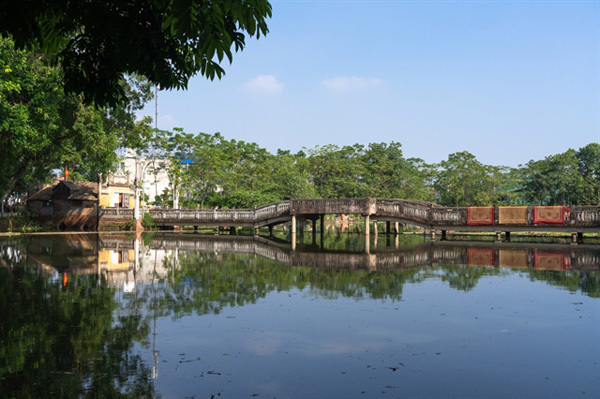 |
| CURIOUS SHAPE: From afar, Khum Bridge looks like a boat that is upside down. Photo mag.handhome.net |
Located in Yen Village in Thach Xa Commune, it is one of three old bridges in what was formerly Ha Tay Province that still exist today. The other two are Nhat Tien Kieu and Nguyet Tien Kieu bridges, which are both found at Thay Pagoda.
The bridge is famed for its unique structure – a house-like building on top and the bridge below – and its shape, which resembles an upside-down boat.
According to Nguyen Van Bang, a member of the management board of the Yen Village temple and communal house, no one knows exactly how old the bridge is, even the oldest people in the village.
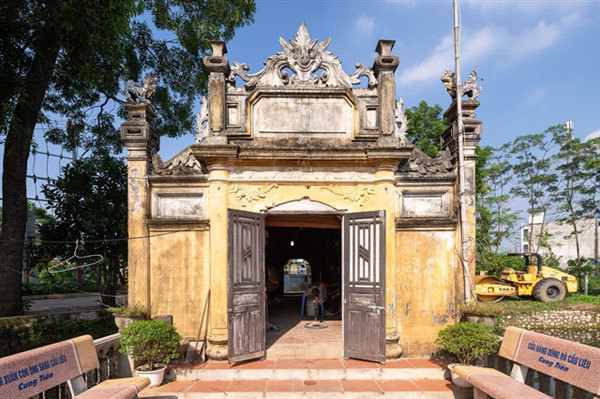 |
| TO THE OTHER SIDE: The entrance to the bridge, which now mainly serves as a place of worship for local people. Photo mag.handhome.net |
Khum Bridge was at one time the main link connecting the village to elsewhere in the vicinity. Villagers conducting trade with or simply visiting surrounding areas had to pass over it.
Later on, when local livelihoods improved and more vehicles appeared, new roads were built and others expanded and the bridge began to see less traffic.
Although it is no longer used as much as it once was, it has become a spiritual venue for local people in particular and for many in Hanoi who come to wish for good luck and good health.
While the time of its construction is unknown, village elders remember that the bridge was severely damaged and rebuilt into what it is today.
“In 1948, French troops swept through the village and burned down the bridge,” Bang said. “Villagers came to extinguish the flames to save it, and dark grey burns can still be seen.”
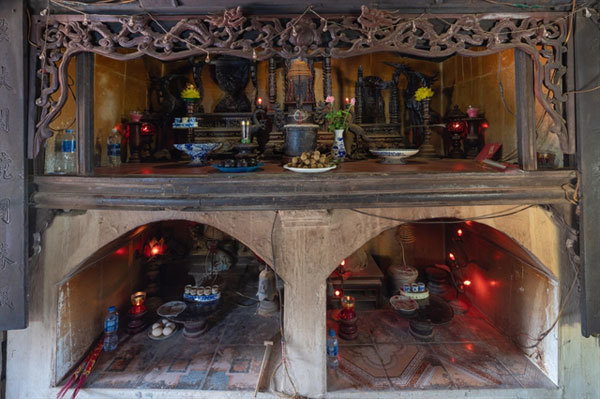 |
| LINK TO ANCESTORS: The altar inside Khum Bridge. Photo mag.handhome.net |
The upper part of the bridge, which is over 12 metres long, is built to resemble a house with five chambers and has a roof of old tiles. The middle space of the house is for worshipping, with six doors, while the two sides are wooden stalls in which visitors can rest and chat. All of its interiors were carved from precious wood.
The walls are made of laterite. The bridge structure below has three huge drainage gates that are also covered with laterite. When the tide is low, small boats can pass by the gates, which are up to three metres in height.
The entrance to the bridge is decorated with sophisticated floral designs and statuettes of holy animals, showcasing the skill of Vietnamese artisans in the olden days.
From a distance, the bridge looks like an upside-down boat, which may explain its name – Khum, or curved.
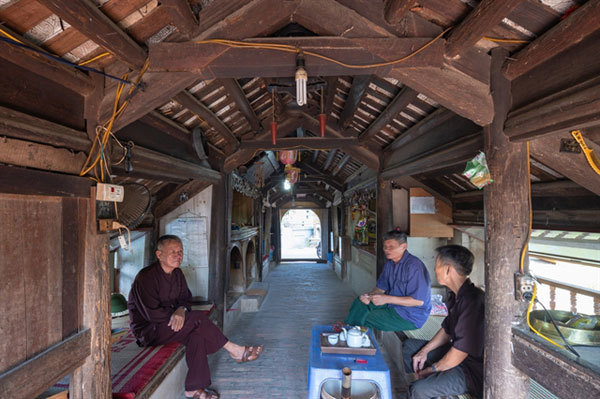 |
| MEETING PLACE: Villagers often gather in the evening inside Khum Bridge to chat. Photo mag.handhome.net |
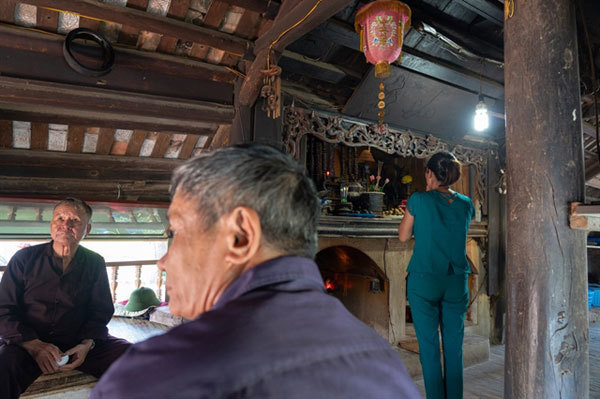 |
| SPECIAL DAYS: People often visit the bridge on the first and 15th day of every lunar month to pray for good luck and good health. Photo mag.handhome.net |
According to Bang, the villagers of Yen hold an incense procession over the bridge to the village on the 20th day of the second and eighth lunar months, to pay homage to the local deity and pray for a peaceful and prosperous year.
The bridge is also crowded with visitors on the first and 15th day of every lunar month, who come to wish for good luck and good health.
“Standing throughout time and many ups and downs, the bridge has become an integral part of our history and a source of pride for our village,” he added.
VNS



